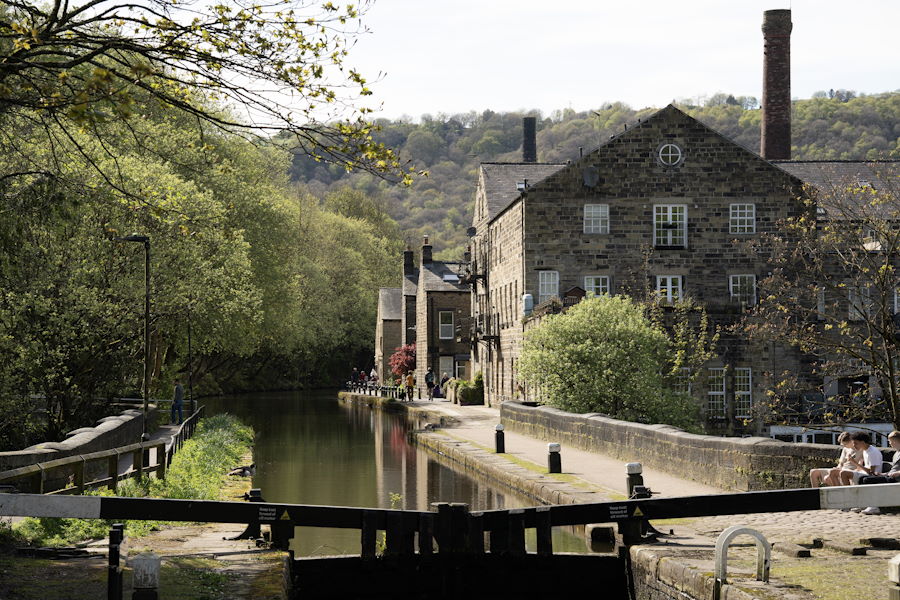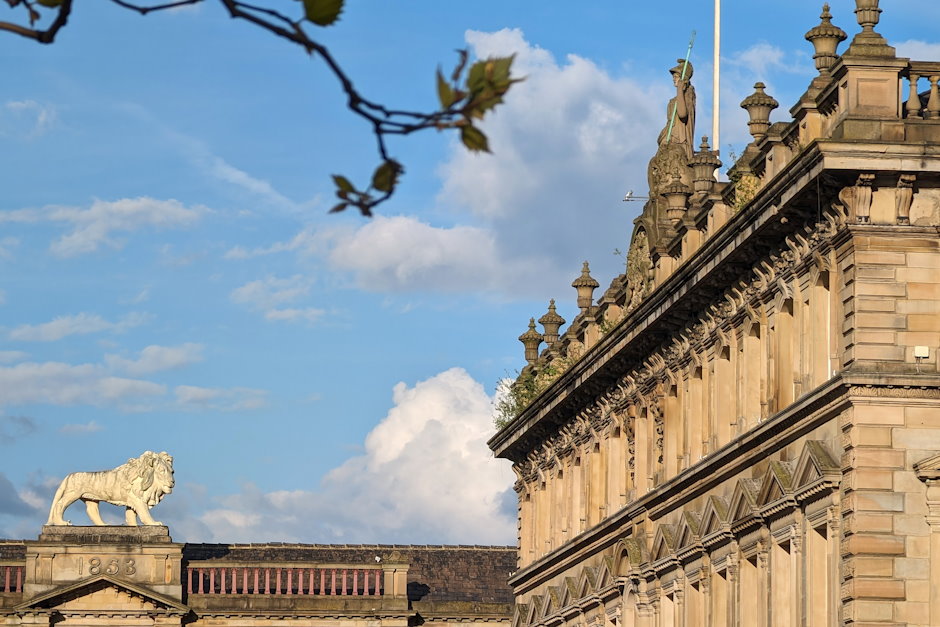
JOURNAL
History lesson
Managing Director Iain Milligan charts the rise of Huddersfield Fine Worsteds which, historically is made up of the following Companies: Broadhead & Graves, Joseph Sykes, Learoyd Brothers, Martin Sons, W E Yates, Josiah France & Hunt & Winterbotham.
The first mention of Huddersfield Fine Worsteds was in the 1920’s when Learoyds became a Limited Company. Huddersfield Fine Worsteds became a registered Company on 28th October 1920.
The company at the time was made up of Learoyd Brothers & Co, Limited, Joseph Sykes & Co Limited and Herbert Armitage trading as A. Crabtree & Co. at Kirkburton. The Directors at the time were Alfred Ernest Learoyd, Alfred Herman Sykes and Herbert Armitage.
In 1911 there were 22,000 people working in Huddersfield producing textiles.
Learoyds won gold medals in 1959 at the Sacramento State Fair for “Trafalgar Twist” cloths.
Alfred Learoyd died in 1941, and the role of Chairman was taken on by Ernest Overton and subsequently by his son, Guy Overton in 1962.
Princess Elizabeth and Prince Philip visited Trafalgar Mills on Leeds Road North, in Fartown, Huddersfield on 26th July 1949.
In August 1979 Learoyds moved from Trafalgar Mills to join Broadhead & Graves and Martin Sons at Kirkheaton Mills in the north eastern part of Huddersfield.
6th April 1949 Bernard Weatherill made a Habit for H.R.H. Princess Elizabeth at the Trooping of the Colour. The fabric used was a special length produced by Learoyds.
30th July 1964 Learoyd announced they would ballot 12 lengths of fabric produced from “the worlds costliest bale of wool” the wool which fetched the world record price of 550d per lb in December 1963.
The company at the time was made up of Learoyd Brothers & Co, Limited, Joseph Sykes & Co Limited and Herbert Armitage trading as A. Crabtree & Co. at Kirkburton. The Directors at the time were Alfred Ernest Learoyd, Alfred Herman Sykes and Herbert Armitage.
In 1911 there were 22,000 people working in Huddersfield producing textiles.
Learoyd Brothers:
Learoyds were presented with a medal for a fancy trouser material of superior quality at the Great Exhibition held at Crystal Palace, a suburb of South East London in 1851. The certificate is signed by Queen Victoria and Prince Albert.Learoyds won gold medals in 1959 at the Sacramento State Fair for “Trafalgar Twist” cloths.
Alfred Learoyd died in 1941, and the role of Chairman was taken on by Ernest Overton and subsequently by his son, Guy Overton in 1962.
Princess Elizabeth and Prince Philip visited Trafalgar Mills on Leeds Road North, in Fartown, Huddersfield on 26th July 1949.
In August 1979 Learoyds moved from Trafalgar Mills to join Broadhead & Graves and Martin Sons at Kirkheaton Mills in the north eastern part of Huddersfield.
6th April 1949 Bernard Weatherill made a Habit for H.R.H. Princess Elizabeth at the Trooping of the Colour. The fabric used was a special length produced by Learoyds.
30th July 1964 Learoyd announced they would ballot 12 lengths of fabric produced from “the worlds costliest bale of wool” the wool which fetched the world record price of 550d per lb in December 1963.
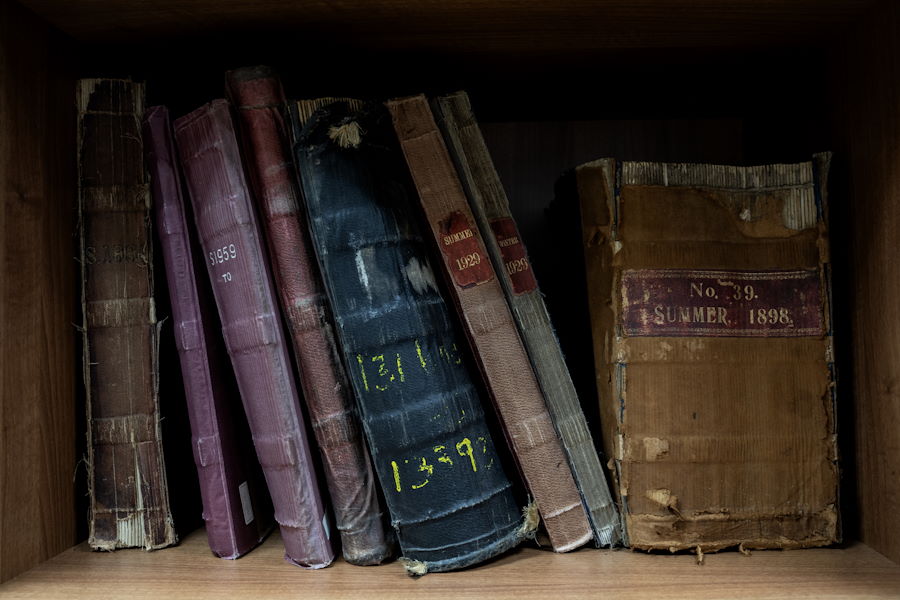
Martin Sons:
Martin Sons started in business in 1859. The founder of the Company was the designer Mr. Patrick Martin.The Company moved to Wellington Mills in Lindley, Huddersfield in 1864.
In 1912 there was a Royal visit to Wellington Mills by George V & Queen Mary. At the time the mill employed 1750 people. The site covered four and half acres and housed nearly 600 looms producing over 750 pieces per week.
December 29th 1917 is the first mention in the trade of cloth being produced with a branded selvedge. It was made by Martin Sons.
In 1976, Martin Sons joined Broadhead & Graves at Kirkheaton Mills.
The mill was visited on 26th July 1949 by Royal Highness Princess Elizabeth and the Duke of Edinburgh.
W E Yates:
In 1871 William Edward Yates started to manufacture cloth at Laisterdyke near Bradford. W E Yates died in 1896 and was succeeded by James Yates.In 1925 Charles Yates became Managing Director of the firm on the death of his father James.
14th June 1965 Yates was the first weaver in the UK to be allowed to use the woolmark sign.
Joseph Sykes & Co.
First appeared in trade directories in 1897 as Joseph Sykes and Co. woollen manufacturers, Rock Mill, Brockholes, about five miles south-east of Huddersfield in the middle of the Holme Valley.In 1920 they merged with Learoyd Brothers and A Crabtree to form Huddersfield Fine Worsteds.
The last textile trade entry for the company is for 1967.
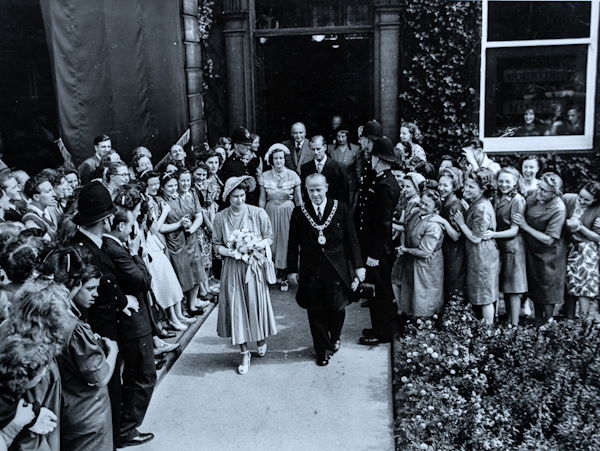

Josiah France:
Josiah France have been associated with cloth making since 1880 in Honley, Huddersfield.In 1950, Josiah France advertised “Caribbean weight suitings “ different because Florida is different- lighter and smoother by far than any other Fall suits available before -these new Caribbean weight suits are Florida’s own!” the tagline boasted.
In 1976 Josiah France moved to Trafalgar Mills on Leeds Road, Huddersfield where it joined forces with Learoyd Brothers & Co.
Mr. Jo Grimmond leader of the Liberal party in 1966 was presented with a suit length which he was later photographed wearing in the House of Commons.
J J Minnis:
In 1874, James Egbert Minnis founded J Minnis in London. It wasn’t until 1883 when John Minnis joined the family business that the Company became known as J & J MinnisJ & J Minnis have supplied fabrics to the Royal Estates since 1930’s – Alsport
John G. Hardy:
The founder of the company being somewhat of an eccentric gentleman became well known for having collected his fabric samples, he would return to London with them stacked under his top hat. He was one of the first cloth merchants to visit the Scottish Highlands and Islands, accordingly claiming to have been responsible for the introduction of both Shetland and Harris tweed cloths to the major markets of the world.In 1929 the Duke of York, who was to become His Majesty King George VI, used a John G. Hardy cloth for the regimental tweed of the Brigade of Guards. He was the Colonel in Chief of the regiment and the cloth consisted of black and white with royal blue and crimson colourations.
King Edward VIII when, as the Prince of Wales, was known to acquire the distinct checked fabric from John G. Hardy that would later bear the name Prince of Wales check.
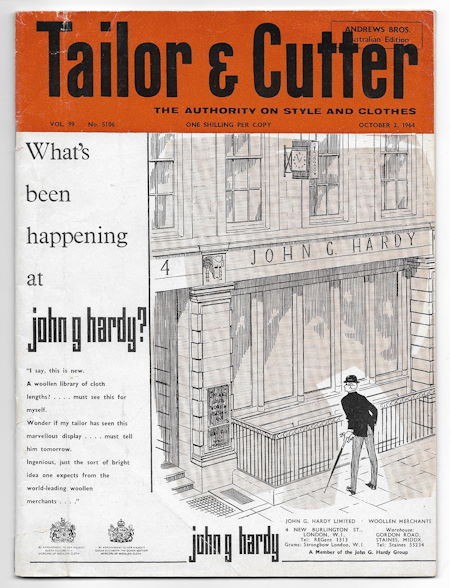
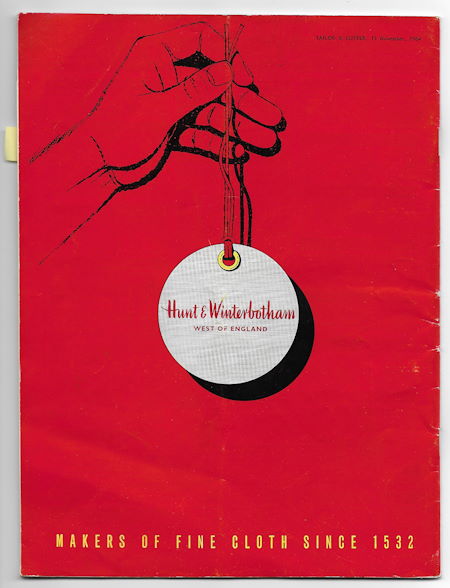
Hunt & Winterbotham:
Hunt & Winterbotham has been manufacturing cloth since 1532 in Cam Mills on the outskirts of Stroud, Gloucestershire.Hunt and Winterbotham incorporated the mills Strachan & Paine (makers of tennis ball fabric and billiard table cloth) – which are still made in Cam Mill today
c.1800 Cam mills was trading as Hunt and Company; taken over by Arthur Winterbotham
1887 a private company was formed known as Hunt and Winterbotham. Arthur Winterbotham laid the foundation of the present Hunt and Winterbotham organisation for direct contact with the user for the sale of their products.
1908 The company was registered to take over the business of woollen cloth manufacturers of the firm of the same name.
1920 Formed an association with Strachan and Co (Stroud) and William Playne of Longfords Mill in Stroud.
A tattersall dress fabric from 1968 is held in the Victoria & Albert Museum’s collection in West London.
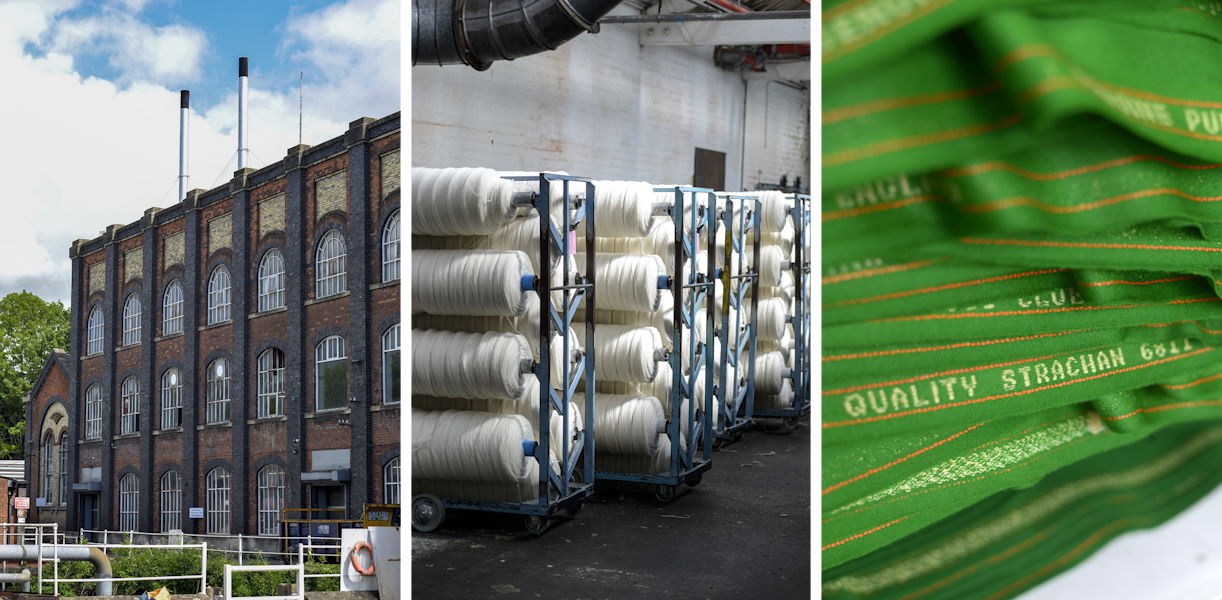
Broadhead & Graves:
Broadhead & Graves scouring room and dyehouse opened in 1830 on the site of Kirkheaton Mills where handloom cloth was brought to be finished.Founded in 1909 by Mr. Fred Broadhead who at the time had a reputation of being the best fancy worsted designer in the trade.
On a visit to the mill at Kirkheaton by the Duke of York on 11th March 1932, he was presented with a suit-length and was given a demonstration of the Gledhill shuttleless loom, a local invention of which there were only 2 in existence.
24th February 1938 the king ordered 3 cloths at the British Industries Fair. The cloths were 15 to 16oz milled worsteds with a gunclub ground, in white and colour with an overcheck.
HRH the Duke of York visited Kirkheaton Mills on 11th March 1932
A fire in 1964 almost destroyed the mill.
